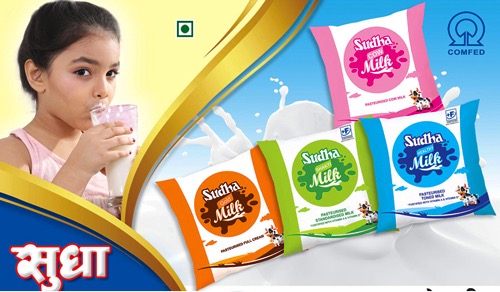The prices of milk and dairy products have increased in Bihar.

Milk and dairy products prices have seen a big rise due to impact of inflation. The prices of milk and dairy products have increased in Bihar. The prices of milk and related products have been hiked by Bihar milk brand Sudha. Sudha has increased the prices of milk by up to Rs 3, said a Zee News report. This will hurt the pockets of common man even more with the prices of most of the essential items going through the roof already. The new rate has come into effect from February 7.
The prices of Sudha milk have been increased on an average from Rs 2 to Rs 3. As per Zee News, the increased prices on packet milk will come into force from February 7. With the new prices, 250-gram peda, a sweet made by milk, will now cost Rs 100 against Rs 90 earlier. Similarly, the price of half litre (5000gm) ghee has been increased from Rs 230 to Rs 250. Now, milk producer willwill get Rs 2.43 more on per litre milk, depending on fat and solids-not-fat (SNF).
For milk suppliers, price of milk has been increased on an average by Rs 1.36 per litre. The new rate will be applicable for milk producers from February 11. COMFED had said last Friday that the prices have been increased keeping in mind demand of milk producers.
Sudha milk new rates
Full cream: Rs 52 per litre
Standard: Rs 46 per litre
Cow milk: Rs 43 per litre
Toned: Rs 41 per litre
Double toned: Rs 37 per litre
T-special: Rs 40 per litre
Ghee 500gm: Rs 275
Paneer 200 gm: Rs 70
Milk cake 250 gram: Rs 100
Butter 100 gm: Rs 48
Gulab Jamun: Rs 220 per kg
Source : Source: PTIReported By: Zeebiz , Feb 7 ,20221

